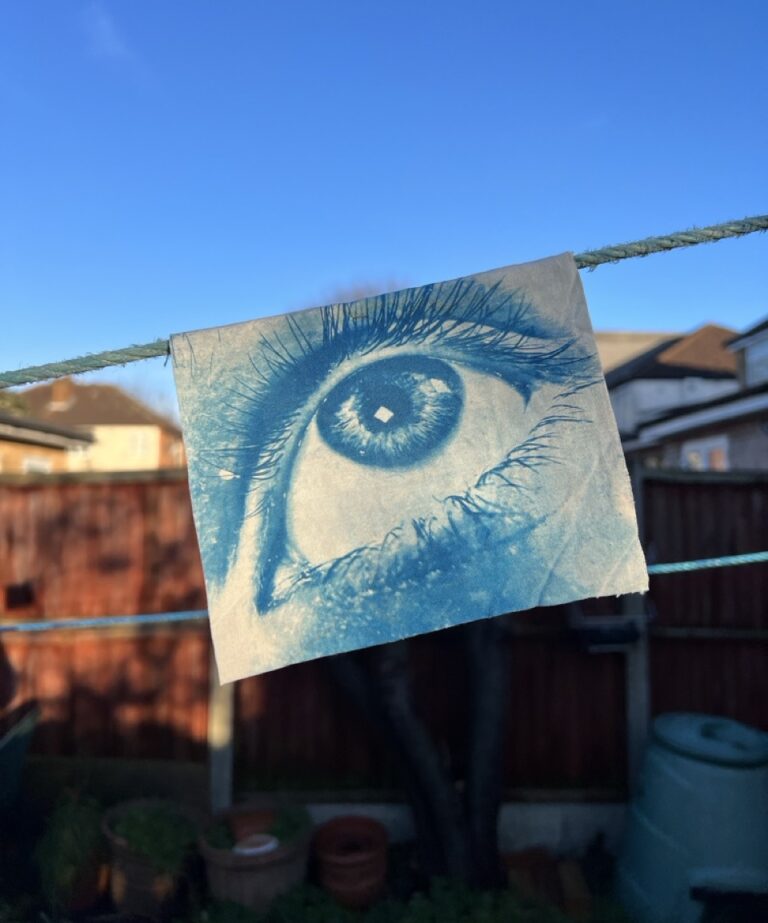Once a month, we give the floor to young artists in the form of an interview. The purpose of this format is to provide young artists with a space for discussion and sharing their creations, as well as to introduce the public to their journeys and artistic approaches.
Who is Riya Panwar?
Riya Panwar is an individual who sees herself as an ongoing experiment, embracing growth through imperfection and learning from failures. Her creative journey has seen her assume various roles, including creative director, stylist, and visual artist. Currently, she is immersed in exploring alternative visual development through techniques such as alternative visual photography while pursuing her MA at the Royal College of Art in Visual Communication.
She identifies herself akin to a tree, drawing parallels between her growth and that of the tree. Just as a tree stands firm amidst storms, rain, and darkness, she faces challenges head-on and continues to evolve with each season, bearing fruits, flowers, and lush green leaves. Riya finds inspiration in nature, recognising that our very existence and drive to create are intertwined with the world around us. Ultimately, her goal is to create art that tells a story, capturing moments in time.
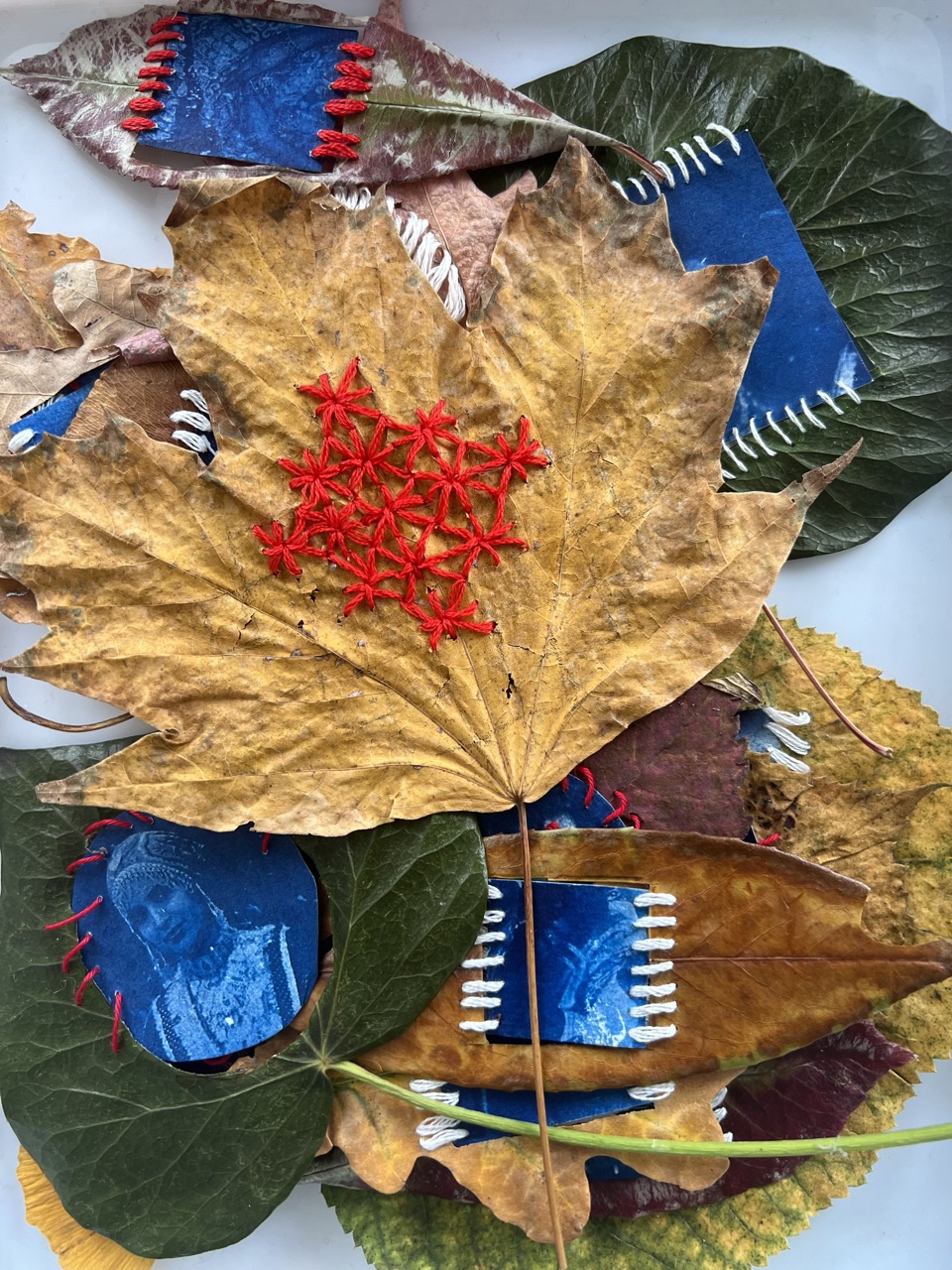
What has been your educational and professional path so far?
My educational and professional journey thus far has been a diverse one. I hail from Dehradun, a picturesque valley that nurtured my love for observing the ever-changing colours of the sky. Schooling was in Science, where chemistry fascinated me, though physics wasn’t exactly my cup of tea. Dance was an integral part of my life during school, with my participation as a folk dancer.
Post-schooling, I ventured to a different state within India for my undergraduate studies in Fashion Communication at the Symbiosis Institute of Design, Pune. This four-year program sculpted me into a creative director adept at crafting visuals.
The COVID-19 outbreak in 2020 disrupted my graduation year, leaving me in a state of confusion as my work heavily leaned towards directing, which became challenging with everything shut down. To adapt, I delved into communication design, a field encompassing branding, visual merchandising, and creative direction. This shift enabled me to contribute remotely to brands, eventually leading me to assume roles as a lead communication manager in advertising firms in Mumbai and Pune.
However, the fast-paced nature of the advertising industry drained my creative energy, emphasising the need for a balance between financial responsibilities and personal growth. In 2022, I made the decision to pursue a Masters to solidify my path, aiming to impart knowledge and inspire others. The Royal College of Art (RCA) seemed fitting for my journey as a communicator.
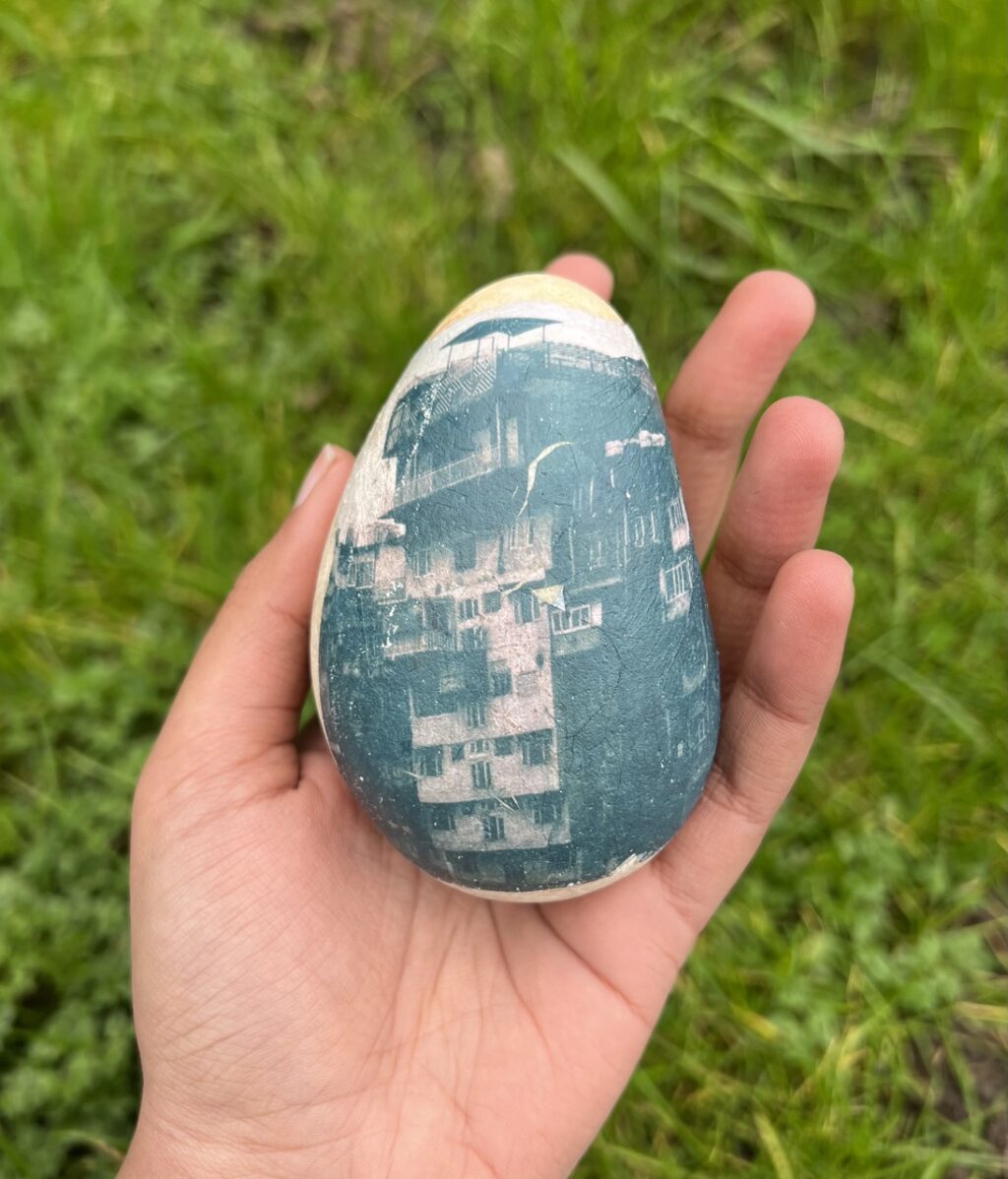
While some inquire if I’ll return to fashion, I’ve realized my passion lies more in art and design. Fashion, for me, is about sharing lived stories rather than mere glamour and beauty. Embracing experimentation, I understand the importance of continually exploring new avenues of visual storytelling, igniting curiosity among my audience.
You started out doing a lot of portrait photography, and then experimented more with materials, thinking about how you could take your photographs to other media and formats. What triggered your decision? And choosing to do this? & In your projects, you explore the notion of time and deterioration. Can you expand on this?
The decision to delve into alternative photography and experiment with different materials stemmed from a desire to infuse my work with my authentic vision. While I initially worked as a creative director within a team, I felt a sense of detachment from my raw perspective. Photography became a means for me to explore this vision, particularly through alternative techniques that embraced imperfections and mistakes as integral elements of artistic expression. Unlike traditional photography, which often priorities flawless imagery, I found myself drawn to the tactile and imperfect nature of alternative processes.
Regarding my exploration of time and deterioration in my projects, it’s rooted in a philosophical perspective on human existence and our relationship with nature. I perceive my work as akin to the passage of time, much like the growth and transformation of a tree. Rather than merely creating visually appealing or mesmerising pieces, I aim to imbue my work with a sense of temporality, reflecting the ever-changing nature of life.
My choice to incorporate materials such as plants, fruits, and bio-materials into my art serves to underscore this concept of sustainable visual understanding. By utilising mediums that naturally evolve and decay over time, I seek to visually articulate the journey of growth and change inherent in both human beings and the natural world. This approach aligns with my philosophical and psychological understanding of existence, emphasising the interconnectedness between humanity and nature as we evolve and define our identities over time.
Can you name three books that have inspired your practice?
My inspiration doesn’t stem from well-known figures or their literary works. Rather, my creative drive is fuelled by the people and situations that surround me, particularly those who endure struggles in their creative journeys.
I find profound inspiration from my family. My mother’s wisdom, reminding me that nothing in life is permanent and that change is inevitable, resonates deeply with me. Witnessing my father’s entrepreneurial spirit, his willingness to take risks, and his acceptance of failure as an integral part of the journey towards success, has shaped my understanding of resilience and perseverance.
Living in a joint family alongside my grandparents, I draw inspiration from the intergenerational dynamics and the evolving narratives that unfold within our household. While I refrain from spotlighting my parents or family members to safeguard their privacy, it’s undeniable that their experiences and guidance have served as invaluable sources of wisdom and insight, shaping my creative growth and perspective.
Do you listen to music while you work? Tell us your best bangers!
While I work, I typically enjoy watching series in various languages. Surprisingly, it’s not a distraction for me; rather, I find it adds an element of fun to my work process. I appreciate tuning into the words and conversations while I’m engaged in tasks. As for music, I reserve it for moments of leisure and enjoyment, particularly when I’m dancing or simply having a good time. So, while I don’t listen to music while working, I do have a selection of favourite tracks that I turn to for those dance-filled moments.
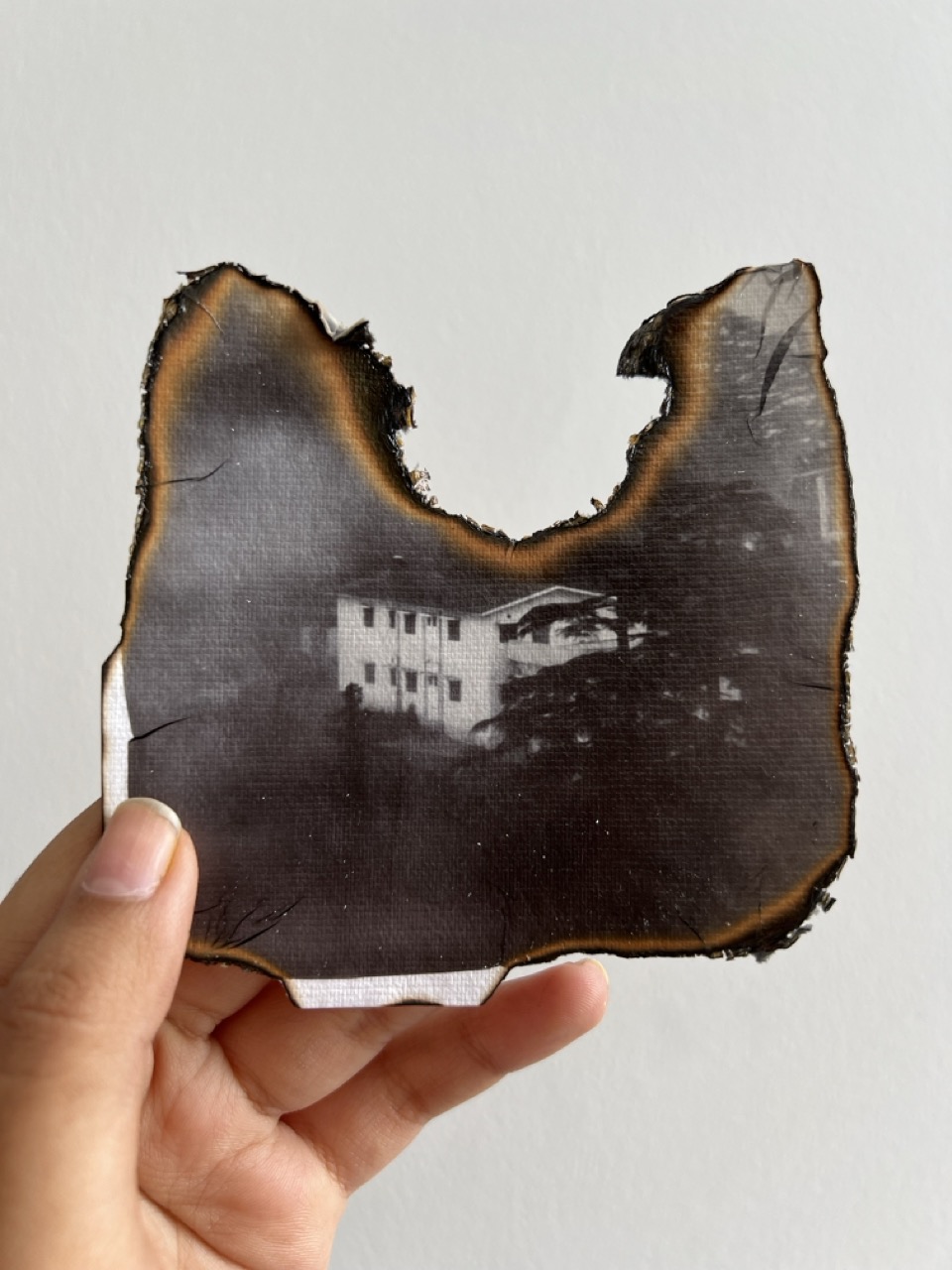
At the moment, you’re making papyrus from fruit and vegetables. It’s extremely meticulous and delicate work. I’ve noticed that your practice also involves taking an interest in the creative process of things around you and testing things out for yourself. Are you curious about learning other techniques like this? And which one would that be?
Exploring various techniques and merging materiality is a central aspect of my artistic practice. I’m constantly drawn to experimenting with different processes, seeking to understand how visuals can seamlessly integrate with the materials themselves.
As for your question about learning other techniques, I’m deeply curious about delving into alternative photography processes that promote sustainable visual development. During my upcoming spring break, I plan to temporarily shift my focus from my current research to explore anthotype and chlorophyll printing methods. This experimentation will complement my ongoing work with papyrus paper, allowing me to further push the boundaries of my artistic exploration.
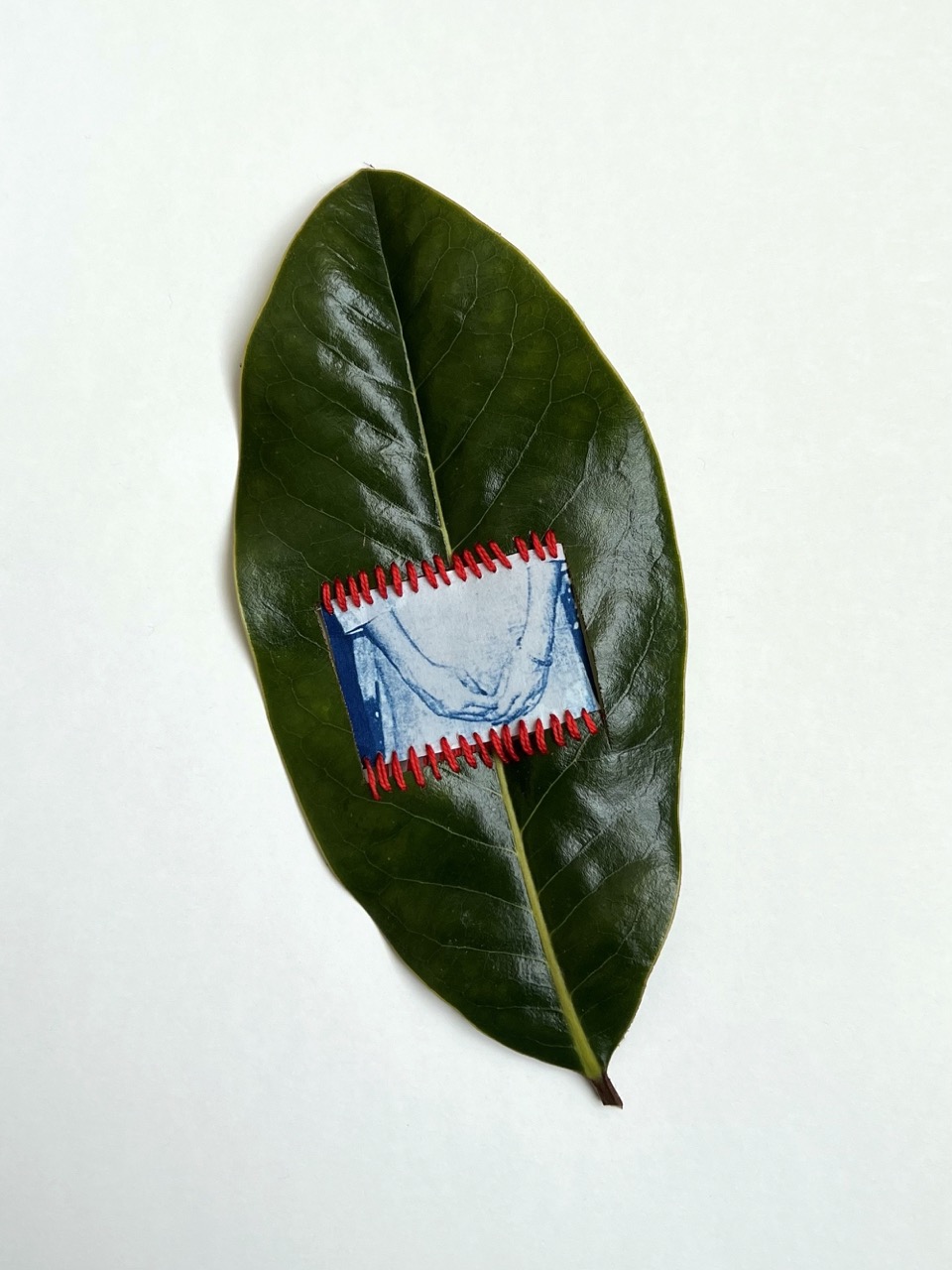
Ultimately, my approach to art revolves around embracing patience and the passage of time, while remaining open to the possibility of failure and the emergence of new discoveries. Through my own experimentation and learning, I hope to inspire others by demonstrating the beauty of imperfection and the value of embracing the journey of creation.
A lot of your work involves printing on cyanotype. Why this choice?
A significant portion of my work revolves around cyanotype printing. This choice emerged from my desire to delve into alternative photography processes following my exploration of polaroid emulsion lift. Cyanotype presented itself as a natural progression in my learning journey. As I delved deeper, I discovered its compatibility with bioplastic, which opened up avenues for experimentation and creativity.
At the Royal College of Art (RCA), cyanotype has become a focal point of my research. However, my approach has been fluid and adaptive, evolving as I experimented with different materials and methods. My aim has been to minimize environmental impact by using fewer chemicals and less water in the development process.
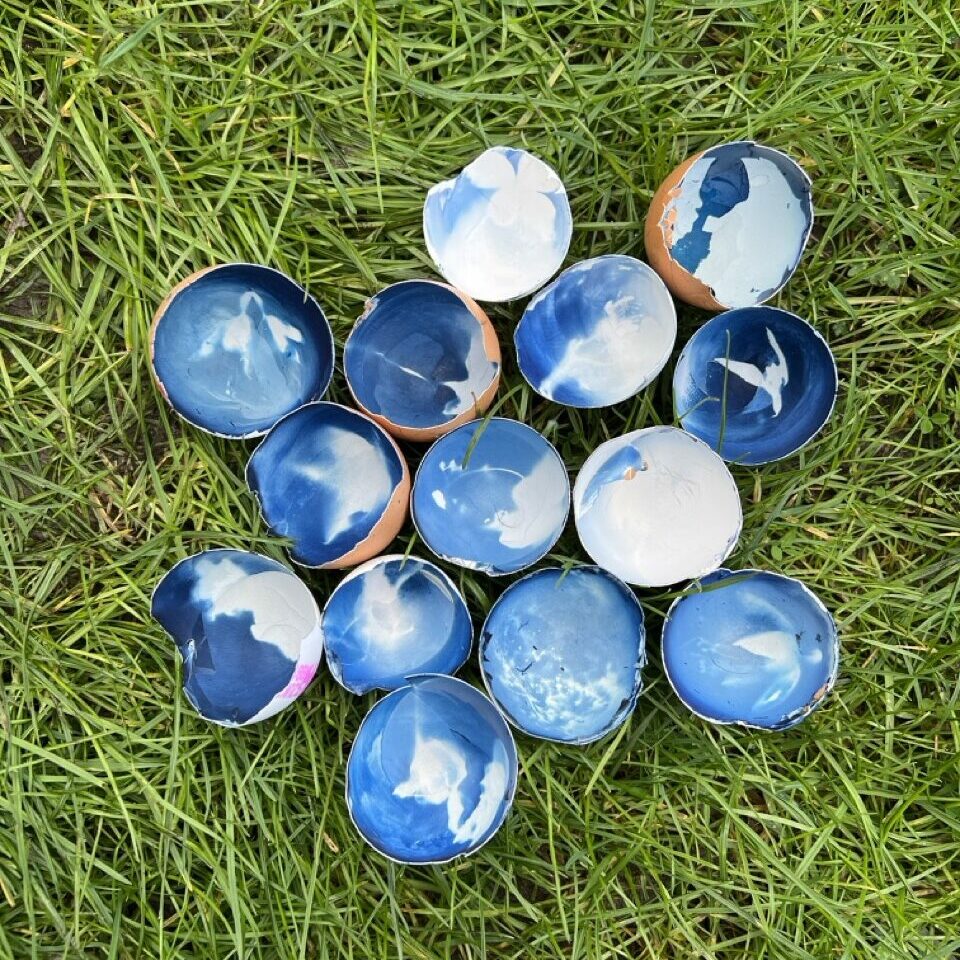
By incorporating bioplastic into the cyanotype chemistry, I’ve been able to reduce water usage and chemical waste while producing visually striking images under UV light. Although this method is still in the experimental phase, I’m dedicated to refining it throughout my MA studies. Ultimately, I intend to continue pushing the boundaries of sustainable visual creation, armed with new questions and avenues for exploration.
You write really well, is writing a practice that could have a greater presence in your art in the future?
Thank you for the compliment. I’ve never really been aware of my writing skills, as it’s something no one has ever mentioned to me. My writing style tends to be quite abstract and poetic, reflecting the scattered nature of my thoughts. I see writing not only as a means of documentation, like many artists do, but also as a way to convey my true emotions, intentions, and feelings to those who encounter my work.
Interestingly, I find myself writing quite extensively even in casual texting, carefully crafting my words and using metaphors to express myself. Sometimes, I end up questioning why I wrote so much, but I suppose that’s just part of who I am.
Moving forward, I’m considering integrating writing more deeply into my artistic practice to see how it complements my work. I’m curious to explore whether it enhances understanding for my audience or if it detracts from the sense of curiosity. These are questions I’m still grappling with myself.
Your creative process and the materials you use come to you very intuitively. Can you explain how you go about this? How do you come up with your ideas? For example, do you keep a diary of ideas, a sketchbook, a camera?
The creative process for me is deeply intuitive, often sparked by quotes, words, or conversations from people around me. I maintain a small diary where I jot down these phrases or sentences that resonate with me, whether they’re my own thoughts or something I’ve heard. These snippets serve as seeds for my ideas and reflections.
For instance, the concept of letting go stems from my mother’s advice to allow things to unfold naturally, rather than forcing them. I find this notion of stepping back from one’s work and allowing it to evolve on its own to be crucial. Sometimes, I create with a specific intent in mind, while other times, I engage in the act of making without any predefined purpose.
The process of creation, for me, is a form of letting go and understanding. Over time, these fragments of ideas and experiences coalesce into narratives that become chapters in my own story.
The process of creation, for me, is a form of letting go and understanding. Over time, these fragments of ideas and experiences coalesce into narratives that become chapters in my own story.
You tend to experiment with organic materials and polaroid emulsion, and the mix is very interesting. Can you tell us what attracts you to this? What do you want to achieve with it?
Polaroid emulsion was my initial foray into alternative photography techniques, and it immediately captivated me. The allure lies in the transformative nature of the emulsion, observing how it changes states in water and air is truly mesmerising. When submerged in water, the emulsion behaves akin to a fish, while in the air, it forms a delicate layer like storytelling skin.
What I find particularly intriguing is the emulsion’s ability to adapt and merge with various materials, such as stone and fruits, almost becoming one with them over time. During the drying process, the emulsion undergoes further transformations, adhering to the material like a second skin. This aspect emphasises the significance of the substrate as much as the visual imagery I create.
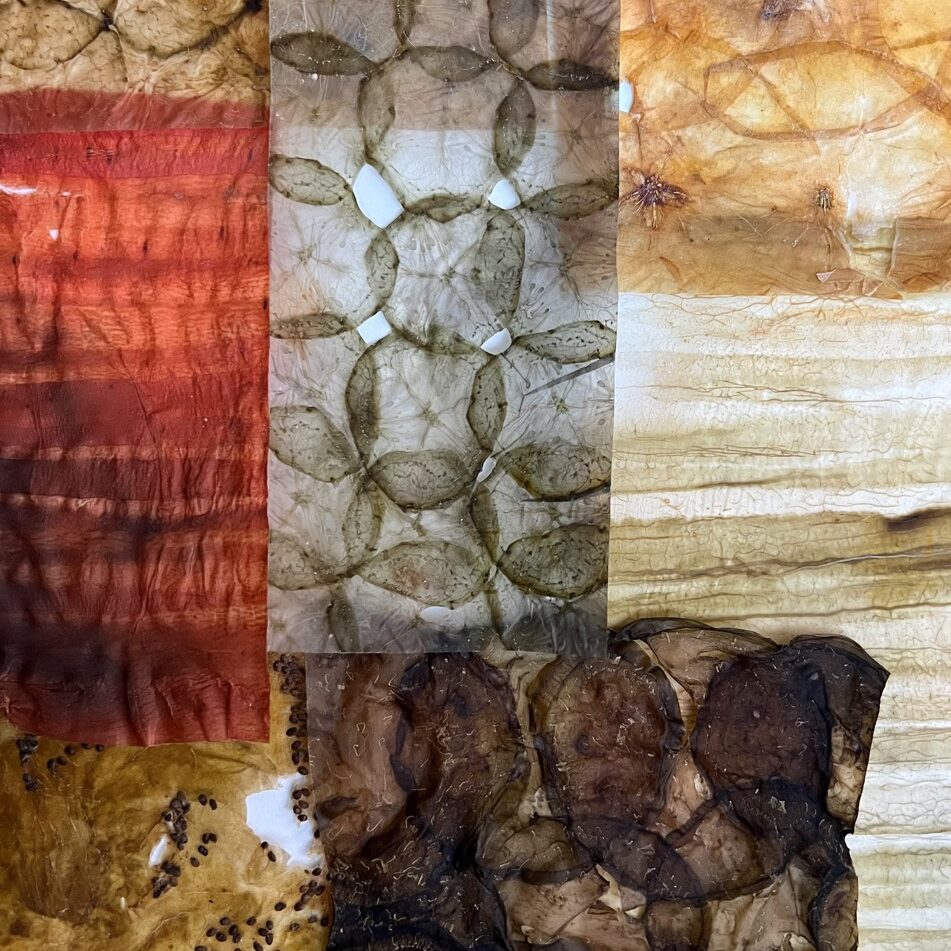
Through experimenting with polaroid emulsion, I’ve embarked on a journey to discover and create my own canvas, allowing me to mould and morph my work in unique ways. Ultimately, my attraction to this technique, and indeed to all alternative photography methods, lies in the concept of transformation and morphing, transcending mere image-making to become a deeper exploration of materials and ideas.
You like to work with memory and the past. Can you tell us about your archiving work?
Where do the stories come from? They often stem from fragments of memories or impactful experiences that have left their mark on us. I believe this is a common thread among creators—we all draw inspiration from our past and our understanding of it. When tasked with creating something meaningful, we sift through the layers of our experiences, seeking out those forgotten fragments and reinterpreting them in a new light.
While I’m no exception to this process, I do strive to infuse my personal narratives into my work. By sharing stories from my own life, I aim to connect with others on a deeper level, allowing them to glimpse a fragment of who I am without needing to know my name. In this way, my work becomes a vehicle for storytelling, inviting viewers to engage with the memories and reflections of a visual creator.
I personally feel like your work has a very textual and historical dimension. Is this something you want to achieve? And if so, why?
Not really, I don’t necessarily aim to achieve any specific textual or historical dimension with my work. Sometimes, I find myself exploring materials based on my own vision and storytelling instincts without a particular goal in mind. However, it’s interesting to hear that some perceive my work as having a historical dimension or resembling an artefact. While I hadn’t considered this aspect before, I appreciate that it resonates with others and adds another layer of interpretation to my creations.
Nature is clearly an inspiration for you in your artistic practice. What do you like about nature most? And do you have any special memories linked to it that you can share with us?
Nature has always been a profound source of inspiration for my artistic practice, primarily because it grounds my existence. Growing up in Dehradun, a serene valley nestled amidst the mountains, provided me with ample opportunities for pause and reflection. The breathtaking vistas of the mountains, the melodies of the birds, and the steadfast presence of the trees have been my companions since childhood.
One of my fondest memories is of experiencing the transition between dusk and dawn in Dehradun. Witnessing the sky transform with hues of colour and observing the trees that have grown alongside me fills me with a sense of wonder and connection to my surroundings. There’s a particular tree that has been a constant presence in my life since I was a child. It’s steadfastness serves as a reminder of the enduring bond I share with my environment.
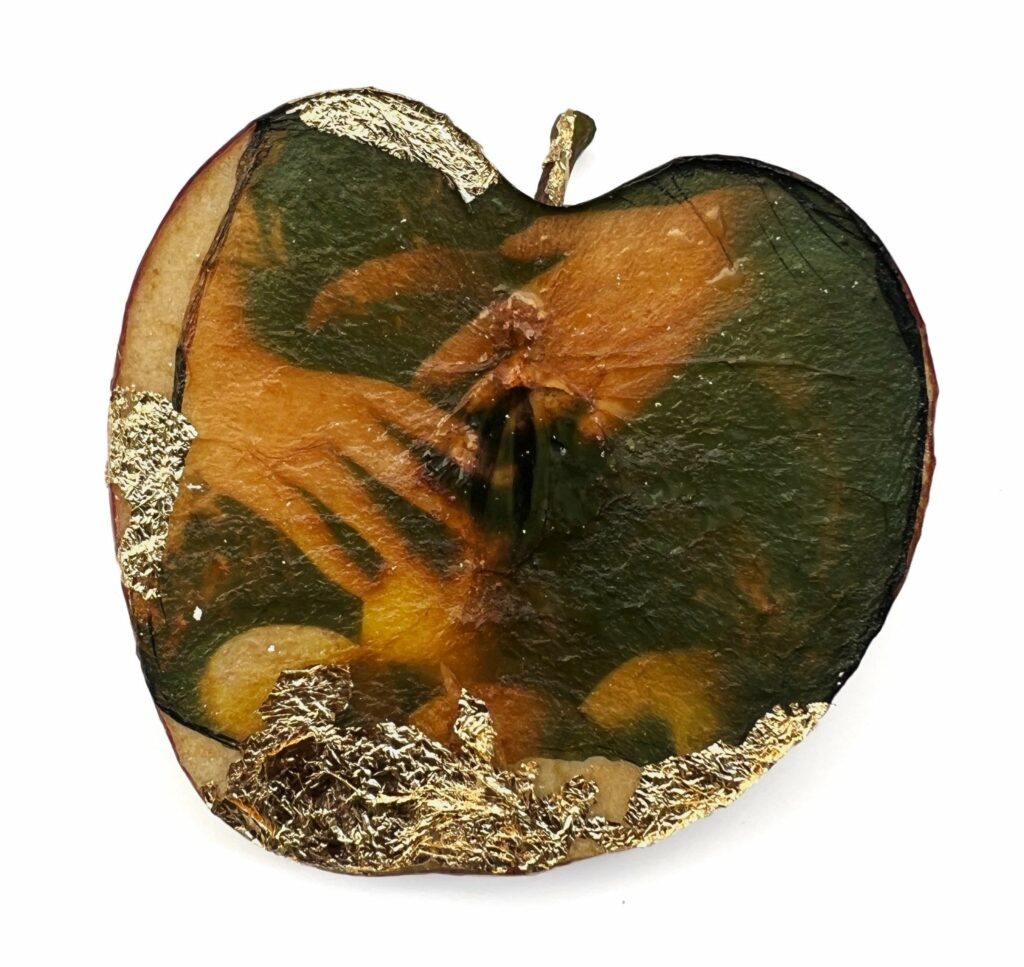
Living in the same locality for years has deepened my familiarity and connection with nature, providing me with a wealth of experiences and memories that continue to influence my artistic practice.
Have you ever exhibited in galleries or museums? If so, what was your experience like? And would you do it again?
I’ve taken risks in various fields to support myself through my work, whether it’s through directing and communication or experimenting with NFTs. Fortunately, I’ve found success in both ventures, particularly with NFTs, which have allowed my work to be exhibited in galleries across the globe. The experience has been incredibly humbling, reinforcing the idea that perseverance can lead to recognition and opportunity.
I have an upcoming exhibition in London with the London Alternative Photography Community, showcasing physical stone pieces from my series TRANSFERENCE, which was also featured in Vogue India. None of this was planned; it all unfolded as I continued to create and explore. I’m grateful and humbled by the opportunity to share these stories with a wider audience, especially on an international scale.
What is your opinion of the art market?
The art market is a complex and risky arena. It’s not just about art; it’s also a business, which can be draining at times. Effective communication and finding a niche are essential for selling artwork. Having a clear plan and diligently working towards it is crucial. While skill is important and can attract financial success, it’s also necessary to take proactive steps and continuously strive for improvement.
Navigating the art market journey can be exhausting, as success can be subjective and difficult to measure. However, exposure plays a significant role in defining success in this realm. Achieving exposure requires finding the right niche, connecting with the right people, and demonstrating dedication to one’s craft. Although it may take time, success is achievable with persistence and resilience.
This philosophy applies not only to the art market but also to any field one chooses to pursue. Maintaining an optimistic outlook is preferable to dwelling on challenges and setbacks.
Name 5 of your top art references! What interests you about them?
I don’t necessarily have a list of top 5 art references, as my inspiration comes from a sense of belonging and connection. I don’t keep a formal catalog of references; instead, I draw inspiration from various sources, whether it’s the work of other artists or simply words that resonate with me and spark creativity. Ultimately, for me, art is about communication, and I approach it with care, empathy, and sensitivity.
Rather than relying solely on books or internet archives, I believe in seeking inspiration from the world around us. This means engaging with people, observing our surroundings, and being open to the light of inspiration that can be found in everyday experiences. There’s a wealth of inspiration to be found in the stories and observations of those close to us, often more so than in distant or abstract sources.
Your works « Edible Art » and « Transference » have been published in Vogue India. Congratulations on this! Can you share this experience with us?
Having my work published in Vogue India was a truly gratifying experience. While I have connections with the creative directors of several magazines in India, I didn’t necessarily anticipate this opportunity, as the vision behind my creations differs significantly from what these magazines typically feature.
Do you have any tips on how to stay creative?
Just keep creating. Your work, at times or, let’s say, most of the time, will not fully define your creative persona. Therefore, you need to create for yourself to keep moving and growing.
Where do you see yourself in 5 years?
I’m not entirely sure. I aspire to venture into academia and pursue teaching, but five years is a significant stretch of time. I tend not to plan too far ahead; instead, I focus on setting more immediate and realistic goals while nurturing my imagination through my creative endeavours. Currently, my plan is to complete my master’s degree and embark on the journey of sharing my knowledge with others.



